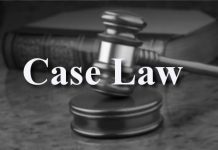This article is written by Subha Sattwa Bandyopadhyay, pursuing a Certificate Course in Advanced Criminal Litigation & Trial Advocacy from LawSikho.com.
Autopsy is a term which operates and originates from the word ‘Autopsia’ which is derived from ‘Autos’ ie to see for oneself. Autopsy is done to identify whether the death of the person was natural or unnatural and if unnatural whether it was homicidal, suicidal, or accidental. Autopsy is also done to identify the identity of the body, time of death, and cause of death if not known. Section 174 and 176 of the Code of Criminal Procedure, 1973 deals with the concept of medico-legal autopsy. The term autopsy and post mortem examination is not similar as it appears to be. The main difference between autopsy and post mortem examination is that in post mortem examination the physician merely looks at the body, fully clothed in a funeral home or in a morgue while in autopsy it means opening of all body cavities and all organs of the trunk, chest and head. Autopsy consist of two types-
- Forensic autopsy which is mainly to determine the cause, mode and manner of death.
- Clinical autopsy which is done to find out what factors actually cause the death of the person. These types of autopsy are done to prevent diseases and future death of the patients. Now let us discuss the importance of autopsy reports.
Importance of autopsy report
The main purpose of autopsy is to find out the exact cause of death of a person. For example if death of a person is caused due to injury in head then it is crucial to understand how the head injury occurred, and for that autopsy needs to be conducted. This will help one understand whether it was caused as a result of an accident, homicide or suicide though the final verdict regarding the manner of death is decided by court of law in most of the cases in most countries worldwide as medical evidence is only one piece of the puzzle and the court rely not only the medical evidence but also in other circumstantial piece of evidence in coming to a conclusion regarding the manner of death. Now let us see who conducts the autopsy and what is its procedure.
Who conducts the autopsy?
The right to conduct and to find the exact cause of death goes to the autopsy surgeon/forensic pathologist. Firstly to conduct a forensic autopsy an intimation to conduct the autopsy on the dead body is given to the legal heirs or the relatives of the deceased. Though their consent or approval in conducting the autopsy is not required as this could cause an irreparable damage to find the exact truth involved in the death of the person.
The body to be autopsied is handed over to the surgeon /forensic pathologist by the legal authority which can be coroner, medical examiner, the magistrate, police or procurator fiscal and then after autopsy the body is handed over to the legal authority and the legal authority the passes it to the legal heirs of the deceased so that the last rites can be performed. In every circumstance, the document of the chain of custody of a dead body is necessary. A register should be maintained containing the names of individuals who are entitled legally to be present during the autopsy. The autopsy should be conducted in a location which is well equipped, well ventilated and well illuminated autopsy room adjacent to the mortuary which will be considered to be the best.
Though forensic autopsy should be conducted by the doctor well trained and certified in forensic but in case of absence of such doctor the doctor who doesn’t possess the requisite skill or certificate can too conduct it especially in rural areas and nevertheless such thing is not uncommon in most of the developing countries of the world. While conducting an autopsy the doctor should maintain a reasonable amount of care as one small mistake can cause a lot of injustice rendering an innocent to get punished instead of an offender. Now let us discuss the procedural part.
Procedure followed when conducting an autopsy
Though autopsy procedure varies according to extent and purpose of the examination. The standard autopsy mostly consists of examination of the chest, cavity, abdominal cavity and the brain. In the chest and abdomen the organs are examined by the pathologist by performing a ‘Y’ or ‘U’ shaped incision that begins at the shoulder and meets at the sternum (breast and bone) and continues vertically to the pubic bone. In case of brain examination an incision is made in the back of the skull from one ear to the other. Generally autopsy begins with a thorough physical examination of the outside of the body that determines the height and weight before any incisions are made.
For purposes of examination the organs are usually removed from the body. Then the organs are weighed and the tissue is cut to look if there are any abnormalities found inside the organs. Then small pieces of the tissue are taken from the organs for microscopic examination after it has been viewed with a naked eye. The incisions made in the body are closed after the end of the autopsy. The organs are either returned or retained for the purposes of teaching, research, or diagnostic purposes. In some cases the pathologist may order special laboratory studies on tissue samples to be carried out taken during an autopsy which may include the following below-
- Culture or test to identify infectious agents which includes bacteria, viruses, parasites etc.
- Chemical analysis for metabolic abnormalities.
- Genetic studies to identify disease associated mutation or heritable diseases.
- Toxicology studies to identify drugs, poisons, or exposures.
Now let us discuss differences between negative, obscure and second autopsy.
Differences between negative, obscure and second autopsy
Negative autopsy-An autopsy which fails to find the exact cause of death with gross, microscopic and other necessary ancillary investigation and which is made without any positive finding will be termed as negative autopsy.
Obscure autopsy-An autopsy which is done meticulously, properly and perfectly but may present with no clear finding as to give definite cause of death leading to the perplexity of the forensic pathologist is defined as obscure autopsy.
The similarity between the above two autopsy are that in both these cases the cause of death remains unascertained though they are not uncommon in forensic practise.
Second autopsy-second autopsy or post mortem re examination on a dead body is required to be carried out before cremation or after exhumation. The interpretation of finding in a second autopsy by an autopsy surgeon is not an easy task which is performed on a previously autopsied body due to various artifacts and alteration and which are being demanded under public cry or for political benefits. Now let us discuss factors affecting medico legal autopsy performance.
Factors affecting medico legal autopsy performance
Autopsy performance has become very complicated and difficult these days. Accepting the authenticity of the report which is in dispute with the interest of the parties is very common to witness now-a-days. The factors affecting the autopsy report are as follows-
- Risky-Like discussed above the risk involved in the autopsy are too high these days as there are probabilities that the report will be criticised, disputed if it is in conflict with the interest of the someone influential or public opinion.
- Controversy-With the involvement of risk in resulting conflict of interest between parties to the dispute that result into a lot of controversy as well as it mismatches with the desires and expectations of the people at large.
- Delicate- Medico legal autopsy is very delicate as if an innocent is punished due to the irregularity of the medical knowledge of the pathologist then it will irk all kinds of people including police, Judiciary and departmental peers.
- Public outcry- If the opinion of the autopsy report is in difference with what the public opinion is then it leads to massive public outcry as political workers and social activist are always up against cases of police torture, hospital or dowry related deaths.
- Administrative hypocrisy and juggleries- Sometimes the doctor who is conducting or doing the autopsy may be in comparison to some other doctor is junior and the district administrator of the health department who is superior in terms of age may respond inadequately or won’t respond as well as while giving opinions.
Case laws relating to autopsy
In Anant Chintaman Lagu v. State of Bombay, AIR 1960 SC 500, the appellant was tried for the murder of one Laxmibai Karve, and the charge held proved against him was that on or about the night between November 12 and 13, 1956, either at Poona or in the course of a railway journey between Poona and Bombay, he administered to the said Laxmibai Karve, some unrecognised poison or drug which would act as a poison, with the intention of causing her death and which did cause her death.
Coverage of doctors and hospitals under CPA
In the case of the Indian Medical Association vs. V.P. Shanta and Ors., III (1995) CPJ 1 (SC), the Supreme Court finally decided on the issue of coverage of the medical profession within the ambit of the Consumer Protection Act, 1986 so that all ambiguity on the subject was cleared. With this epoch making decision, doctors and hospitals became aware of the fact that as long as they have paid patients, all patients are consumers even if treatment is given free of charge.
Where compensation was awarded
In this context, it may be recalled that in the case of the State of Haryana and Ors v. Smt. Santra, I (2000) CPJ 53 (SC) (by S. Saghir Ahmad and D.P.Wadhwa, JJ.), the Supreme Court in a Special Leave Petition upheld the claim for compensation where incomplete sterilization (family planning operation) was held to be defective in service. Smt Santra underwent a family planning operation related only to the right fallopian tube and the left fallopian tube was not touched, which indicates that complete sterilization operation was not performed. A poor labourer woman, who already had many children and had opted for sterilization, became pregnant and ultimately gave birth to a female child in spite of a sterilization operation that had obviously failed.
Conclusion
Though inserting of section 174 and 176 of Code of Criminal Procedure 1973 has made autopsy mandatory in case of unnatural death of a person for finding out the exact cause of death of the person to which it has been successful but in few cases due to the interference of some influential people whose interest is in conflict with it and sometimes due to difference of public opinion has made medico-legal autopsy very complicated and difficult because in those cases truth gets buried in the hands of power.
References
- https://www.ncbi.nlm.nih.gov/books/NBK539901/
- https://legaldesire.com/medico-legal-postmortemautopsy-in-india-purpose-benefits/
- https://www.emedicinehealth.com/autopsy/article_em.htm#what_is_an_autopsy_who_performs_the_procedure
- https://indiankanoon.org/doc/1813863/
- https://www.ncbi.nlm.nih.gov/pmc/articles/PMC2779963/
Students of Lawsikho courses regularly produce writing assignments and work on practical exercises as a part of their coursework and develop themselves in real-life practical skill.
LawSikho has created a telegram group for exchanging legal knowledge, referrals and various opportunities. You can click on this link and join:












